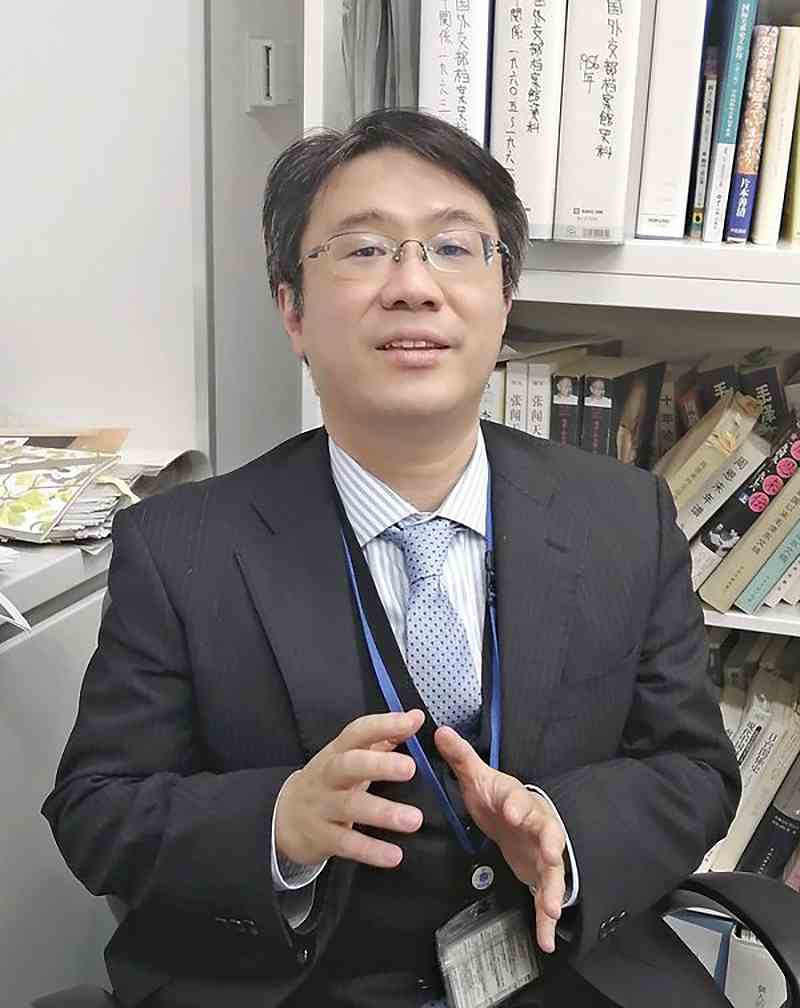
Yasuyuki Sugiura, senior researcher at the Defense Ministry’s National Institute for Defense Studies
December 10, 2021
The China Security Report 2022, released by the Defense Ministry’s National Institute for Defense Studies in November, describes how the “joint operations capabilities” of China’s military — from the army and navy to the air force and rocket force, a strategic missile unit — have been strengthened under the administration of Chinese President Xi Jinping.
China has reorganized its seven military regions to handle defense into five theater commands that would be capable of responding immediately to emergencies. Each of the four forces have been given joint command functions to coordinate operations. A new strategic support unit responsible for the cyber and space domains has also been established.
This major reorganization of the army-centered structure has significantly strengthened the authority of the Central Military Commission, which is the top military organization of the Chinese Communist Party.
NIDS senior researcher Yasuyuki Sugiura, the author of the report, said in an interview with The Yomiuri Shimbun that its aim was to describe the motivations behind the reforms, which are taking place in a “military of the party,” a distinctive Chinese characteristic.
The following is excerpted from the interview.
Speed, thoroughness
Japanese analyses of the Chinese military tend to focus on things like new equipment and other hardware aspects, statistical indicators like increasing defense budgets and visible actions against foreign powers.
All of this is of course important, but we need a more multifaceted analysis to understand the aims and implications of Chinese military behavior. Without this, we might overestimate or underestimate the capabilities of the Chinese military.
We thought it was necessary to clarify the concepts that have governed the largest military reforms since the founding of the country, the organizational systems that are being built, and the training and education systems that are being developed.
Above all, I think we need to have “the correct amount of fear based on correct estimates.”
The military reforms launched in 2013 by Xi, who is also chairman of the party’s Central Military Commission that oversees the armed forces, have sought to overwhelm the Chinese military’s many shortcomings — such as its focus on the army and corruption in the officer corps — with speed and thoroughness.
They have succeeded in steadily strengthening joint operations capabilities. That the Chinese military is getting closer to becoming the world’s top military force is a serious concern for the security situation of Japan and the rest of East Asia.
‘Win without fighting’
The Xi administration believes that by trying to become a military that can “win by fighting” even against the United States, it will be able to “win without fighting” in a wide variety of conflicts, including over Taiwan.
In addition to the army, navy and air forces, the joint operations concept includes domains such as space, cyber, and electromagnetic weapons, as well as the pursuit of victory in cognitive domains through psychological warfare and public opinion battles.
I believe the goal is to make Taiwan think it cannot win even with the backing of the United States, and thus agree to unification.
However, I think the Chinese armed forces know they are not yet at the level of a top-class military in the world and understand they are not yet capable of defeating the world’s strongest nation, the United States.
A big concern is the lack of actual battle experience. This is something that cannot be overcome through reforms alone.
Russia has a wealth of real-world experience in conflicts in places such as Chechnya and the Crimea. The goal of the frequent joint exercises China conducts with Russia is probably to gain know-how regarding joint operations command.
De facto commanders
The Chinese military is the “military of the party” that follows the Chinese Communist Party, not the state. Because of this, it has maintained a system in which each unit has a “political commissar” responsible for instilling the party’s ideas in the military.
This official is almost equivalent to a commander and has the right to approve operational actions. The presence of political commissars who are not operational specialists but have strong authority can be considered an irrational aspect of the Chinese military that could create delays in operational decisions during tense situations.
However, the military is the pillar of the Chinese Communist Party’s single-party dictatorship. Even if the political commissar is a stumbling block, if the government had to choose between a “military that can win battles” and a “military of the party,” it seems it would pick the latter without hesitation.
The biggest challenge in China’s concept of unification with Taiwan is to balance the effective execution of joint operations with a “military of the party.”
This interview was conducted by Yomiuri Shimbun Staff Writer Seiichiro Takeuchi.
"World" POPULAR ARTICLE
-

8 Japanese Nationals Stranded on Indonesia’s Sumatra Island
-

U.S. Senate Resolution Backs Japan, Condemns China’s Pressure
-

Mozambican Cooking Class Held in Matsuyama, Ehime Pref.; Participants Don Aprons, Bandanas Made from Traditional Mozambique Fabric
-

China to Impose Sanctions on Shigeru Iwasaki, Former Head of Japan’s Self-Defense Forces, Who Serves as Adviser to Taiwan’s Executive Branch
-

South Korea’s Top Court Dismisses Nippon Steel Appeal in Lawsuit over Requisitioned Worker
JN ACCESS RANKING
-

Tokyo Economic Security Forum to Hold Inaugural Meeting Amid Tense Global Environment
-

Keidanren Chairman Yoshinobu Tsutsui Visits Kashiwazaki-Kariwa Nuclear Power Plant; Inspects New Emergency Safety System
-

Imports of Rare Earths from China Facing Delays, May Be Caused by Deterioration of Japan-China Relations
-

University of Tokyo Professor Discusses Japanese Economic Security in Interview Ahead of Forum
-

Japan Pulls out of Vietnam Nuclear Project, Complicating Hanoi’s Power Plans






















